The powerful association between horses and the sun spans diverse cultures across millennia, creating one of mythology’s most enduring symbolic partnerships. From the gilded chariots of Helios racing across the Greek sky to the fiery steeds of the Vedic sun god Surya, horses have been consistently portrayed as the bearers of solar power. This ancient connection wasn’t arbitrary but emerged from profound observations about both horses and the sun as symbols of energy, vitality, and cyclical movement. The magnificent horse—with its speed, strength, and spirit—became the natural embodiment of the sun’s daily journey and life-giving properties. This article explores the rich tapestry of mythology that connects these two powerful symbols, revealing how ancient civilizations around the world independently developed strikingly similar narratives about horses and their solar associations.
The Sun Chariot Archetype
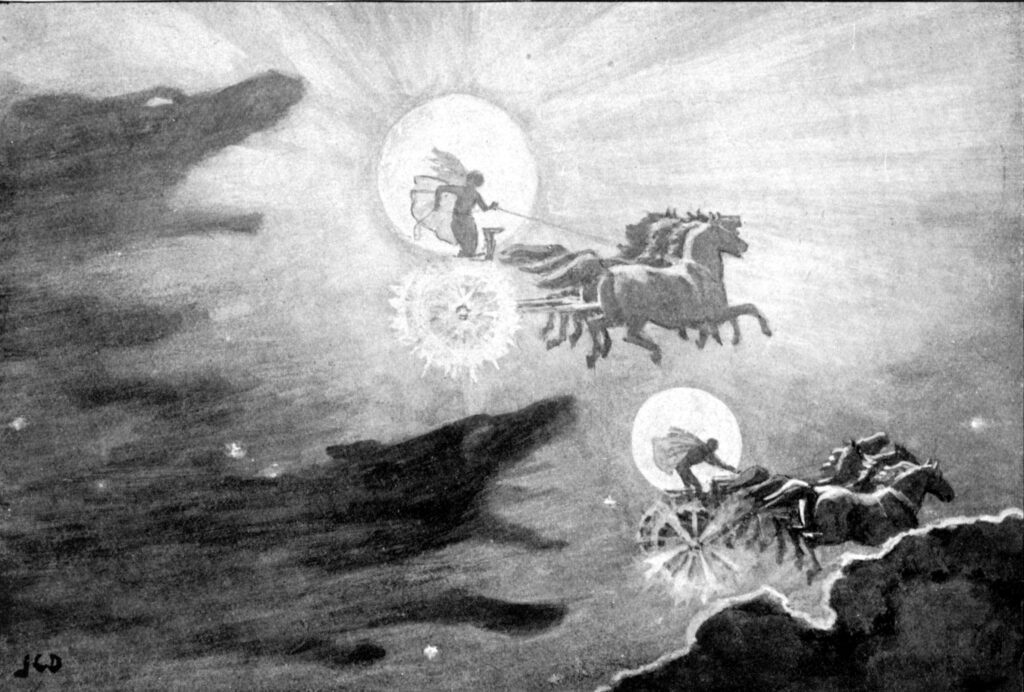
The image of the sun god driving a horse-drawn chariot across the sky represents one of mythology’s most widespread and persistent archetypes. This powerful visual metaphor appears with remarkable consistency across unrelated cultures, from Greece and Rome to India and China. In Greek mythology, Helios drove his chariot pulled by fire-breathing horses across the heavens each day, creating the passage of the sun from east to west. The Norse god Sol similarly rode in a chariot drawn by the horses Árvakr and Alsviðr, whose names translate to “early awake” and “very quick,” embodying the sun’s perpetual movement. This recurring motif reflects ancient humans’ need to explain the sun’s movement in comprehensible terms, with horses serving as the perfect symbolic vehicle due to their speed and endurance.
Solar Horses in Greek Mythology
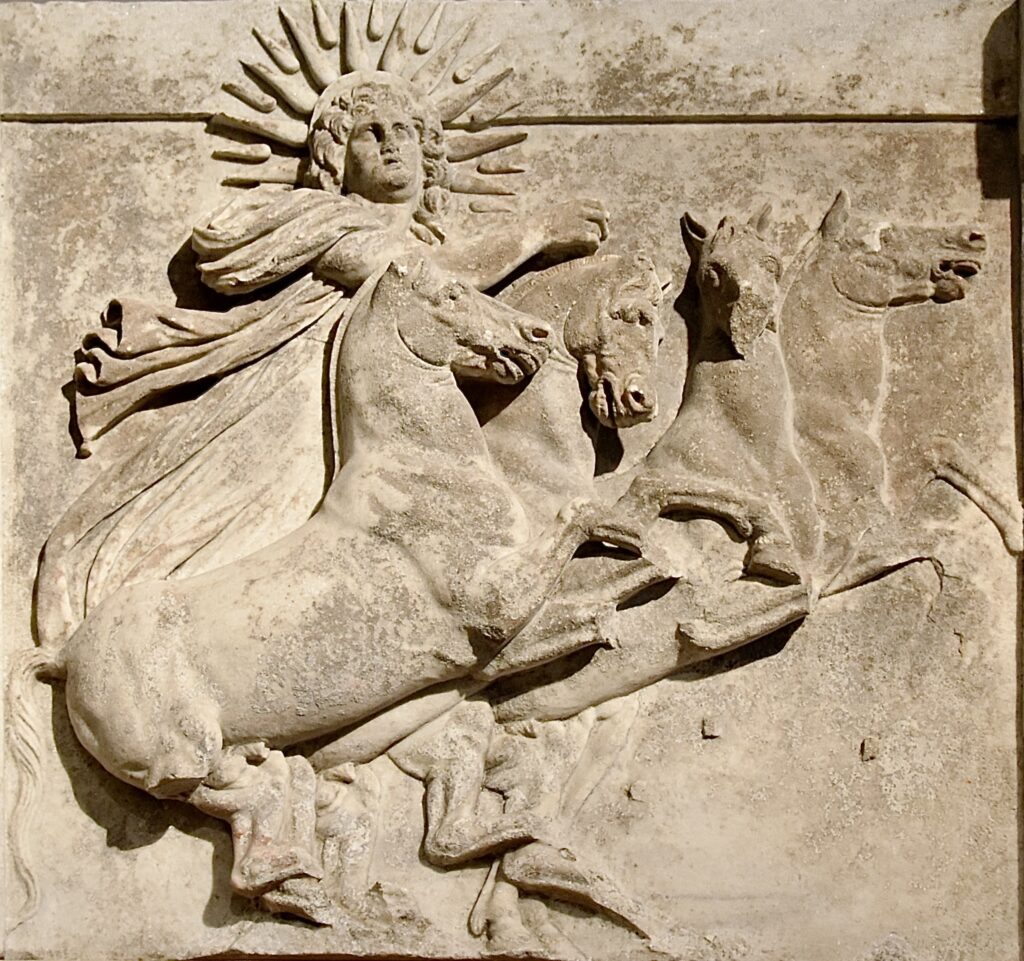
Greek mythology contains perhaps the most elaborate traditions connecting horses to solar symbolism. Helios, the personification of the sun, drove a golden chariot pulled by four magnificent horses—Pyrois, Aeos, Aethon, and Phlegon—whose names evoked fire, air, and blazing light. These divine steeds were no ordinary horses but were depicted breathing fire and possessing supernatural endurance to complete their daily cosmic journey. The tragic myth of Phaethon, who borrowed his father Helios’s chariot only to lose control of the powerful solar horses, demonstrates the tremendous power associated with these equine beings. This cautionary tale, ending with Zeus striking down Phaethon to prevent worldwide destruction, highlights the dangerous potency of solar energy embodied in horse form. Greek vase paintings and sculptures frequently depicted these solar horses with exaggerated features that emphasized their connection to fire and light.
Surya’s Seven Horses in Hindu Tradition
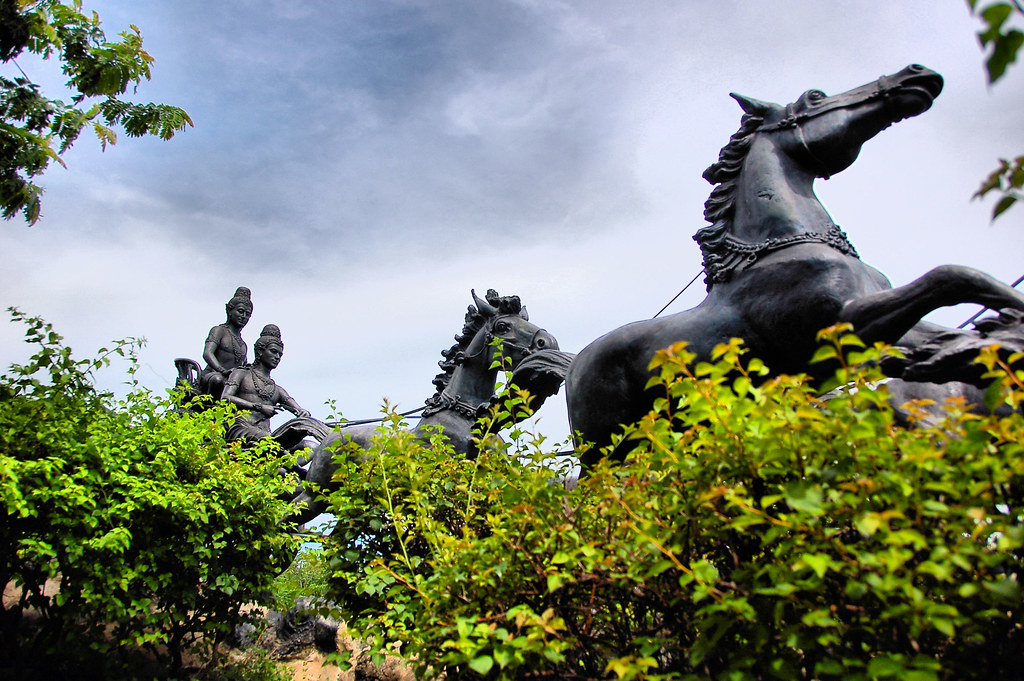
In Hindu mythology, the sun god Surya rides across the heavens in a magnificent chariot drawn by seven horses. These horses represent the seven days of the week and the seven colors of the rainbow, creating a rich symbolic tableau connecting celestial movements to earthly time. The Rigveda, an ancient Indian sacred collection of Vedic Sanskrit hymns, contains numerous references to Surya’s horses, describing them as “bright as suns” and capable of measuring out time for mankind. Unlike the four horses of Helios, Surya’s seven steeds are often depicted as a single horse with seven heads, emphasizing their unified purpose in pulling the sun across the sky. Hindu temples frequently feature elaborate carvings of Surya’s chariot and horses, particularly at sacred sites like Konark’s magnificent Sun Temple, where giant stone wheels and horses create a monumental tribute to this solar connection.
Norse Solar Horse Traditions
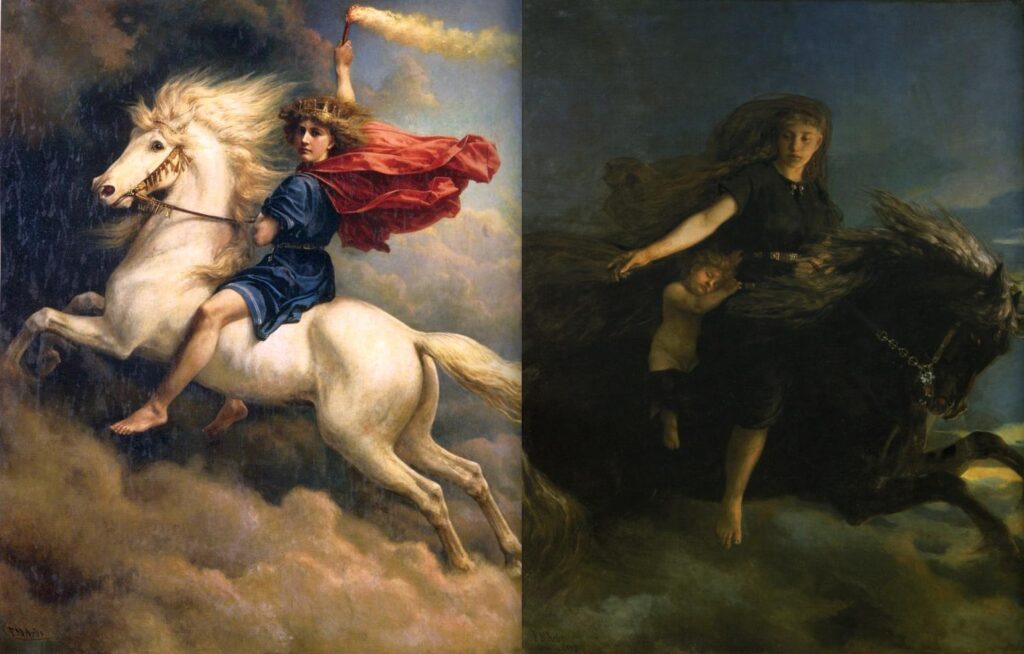
Norse mythology features Skinfaxi, the horse whose name means “shining mane,” who pulls the chariot of Dagr, the personification of day. As Skinfaxi gallops across the sky, his radiant mane illuminates the earth and sky, bringing light to the nine worlds of Norse cosmology. His counterpart, Hrímfaxi (“frost mane”), carries Nótt, the goddess of night, whose horse’s coat drips with dew that falls to earth each evening. This pairing creates a perfect celestial cycle embodied in equine form. The Norse peoples, living in the far north where seasonal changes in daylight are dramatic, developed particularly rich traditions around solar horses, evident in Bronze Age rock carvings found throughout Scandinavia depicting horses pulling sun disks. Archaeological discoveries like the Trundholm sun chariot, a Nordic Bronze Age artifact featuring a horse pulling a gilded solar disk, provide tangible evidence of this deeply rooted association.
The Celtic Horse Goddess Epona
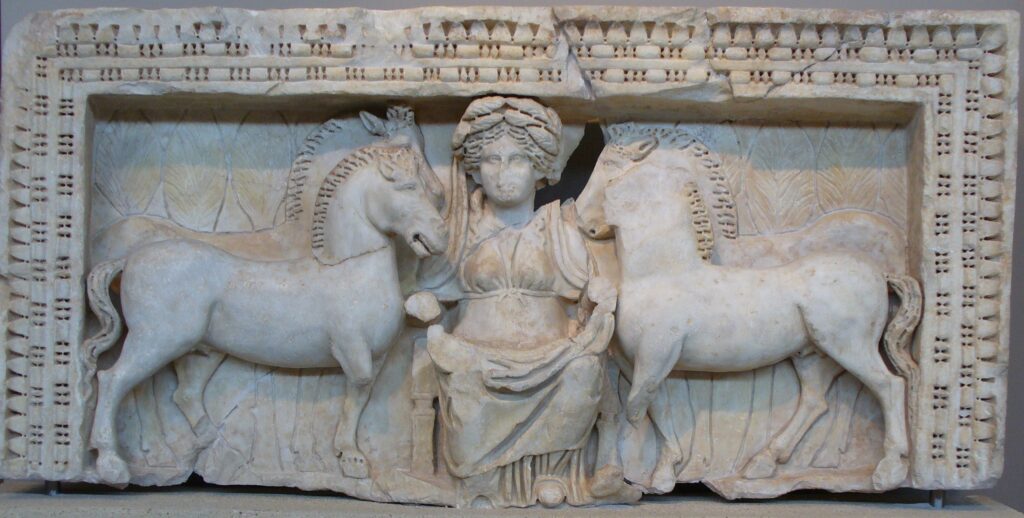
The Celtic horse goddess Epona stands as one of the most important deities connected to both horses and solar symbolism in European tradition. Uniquely, she was the only Celtic goddess officially adopted into the Roman pantheon, indicating her tremendous cultural significance. Though primarily associated with horses, fertility, and protection, Epona’s iconography frequently includes solar symbols, suggesting her dual nature as both an equine and solar deity. Archaeological evidence shows Epona often depicted with solar wheels or riding a horse in a posture reminiscent of the sun’s movement across the sky. The timing of her primary festival on December 18th, near the winter solstice when the sun “returns” to lengthen days, further reinforces her solar associations. Celtic coins frequently feature horses alongside sun wheels or rays, demonstrating how thoroughly these symbols had merged in the Celtic imagination.
Horses in Chinese Solar Mythology

Chinese mythology features several fascinating connections between horses and solar symbolism, most notably in the tale of the ten suns represented as three-legged birds that would travel with their mother, the goddess Xihe, who transported them in a chariot drawn by six magnificent dragons or horses. According to legend, these ten solar birds lived in a mulberry tree in the eastern sea, and each day, one would travel across the sky in Xihe’s chariot, creating daylight. Ancient Chinese bronze artifacts often depict horses with birds and solar imagery, reinforcing this mythological connection. The Chinese zodiac includes the horse as the seventh sign, traditionally associated with the hours of 11 a.m. to 1 p.m. when the sun is at its highest point, further cementing this solar association. Chinese mythology also includes magical horses capable of flight and associated with fire and lightning, elements naturally connected to solar imagery through their shared qualities of heat and light.
Native American Horse-Sun Connections
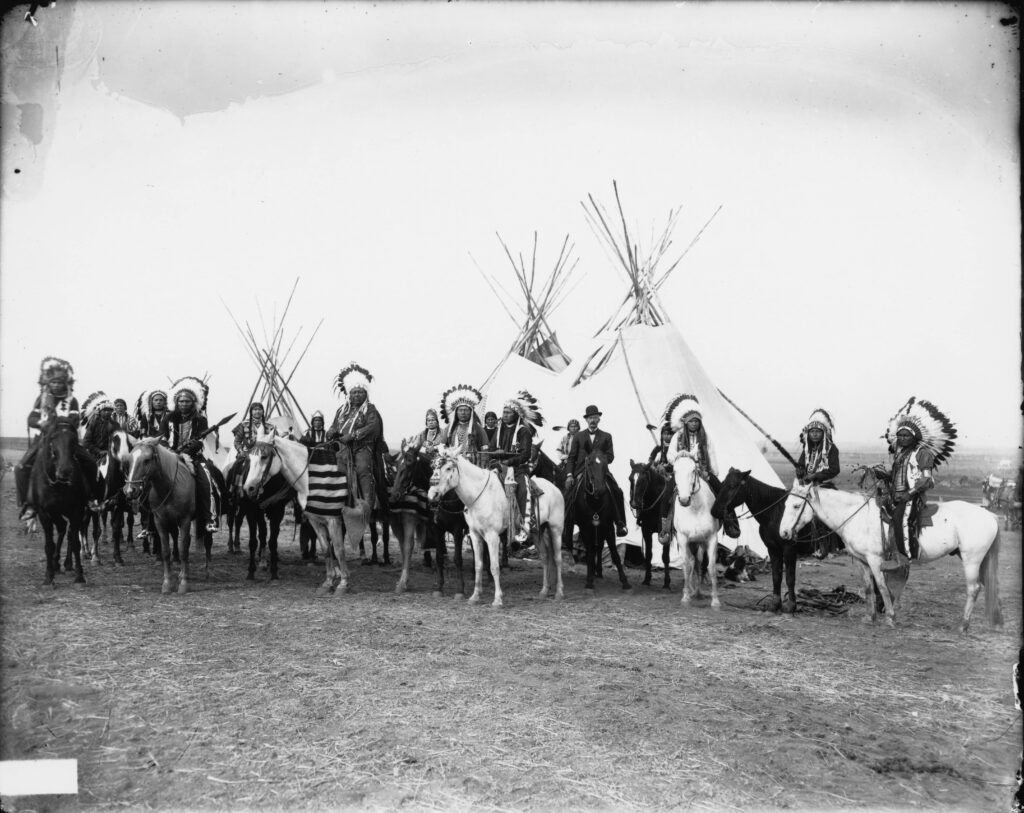
Though horses were reintroduced to the Americas by European colonizers, many Native American tribes quickly incorporated them into their spiritual and mythological frameworks, often connecting them to pre-existing solar traditions. The Plains Indians, in particular, developed rich spiritual practices connecting horses to the sun, with horse dancing ceremonies often coinciding with solar events like the summer solstice. The Lakota Sun Dance, while predating the reintroduction of horses, incorporated equine symbolism after horses became central to their culture. Some tribes viewed horses as gifts from the sun god, explaining their speed as a manifestation of solar power. The Blackfoot tradition tells of the first horses emerging from the water, their wet coats glistening in the sunlight like the sun itself, creating an origin myth that inherently connects horses to solar qualities. These traditions demonstrate how the sun-horse connection transcends cultural boundaries and can emerge independently in diverse societies.
Practical Origins of the Horse-Sun Connection
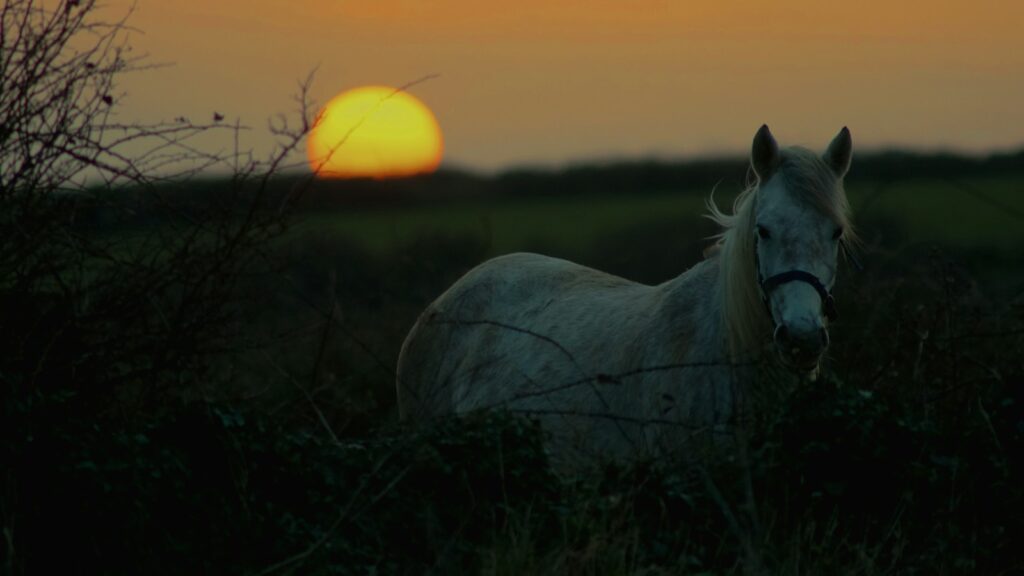
Beyond pure mythology, practical observations likely contributed to the widespread association between horses and the sun across ancient cultures. Horses’ natural biology connects them to solar symbolism—their peak activity periods typically occur during daylight hours, unlike many nocturnal animals. The sheen of a horse’s coat in sunlight, particularly for light-colored or golden horses, creates a visual reminder of solar radiance. Early agricultural societies would have observed horses’ natural affinity for warmth and tendency to graze in open, sun-filled meadows rather than dense forests. The horse’s tremendous importance in ancient warfare, trade, and transportation made it a natural symbol of power, which easily transferred to solar associations since the sun represented the most visible and constant power in ancient peoples’ lives. This practical foundation helps explain why such similar mythological associations developed independently across cultures with little or no contact.
Astronomical Alignments and Horse Symbolism

Archaeological evidence suggests that some ancient cultures created physical monuments aligning horse imagery with solar astronomical events. The White Horse of Uffington, a 3,000-year-old chalk figure carved into an English hillside, appears to have been designed to interact with the midwinter sun when viewed from specific vantage points. Numerous Bronze Age rock art sites in Scandinavia feature horses positioned in relation to solar symbols that align with solstice or equinox sun positions. The famous Nebra Sky Disk from Germany, dating to approximately 1600 BCE, features solar and lunar symbols alongside a boat-like arc interpreted by some scholars as representing a horse-drawn solar chariot. These physical alignments demonstrate how deeply intertwined horse and solar symbolism became in ancient cultures, manifesting not just in stories but in monumental landscape modifications designed to track astronomical movements. The preciseness of these alignments suggests advanced understanding of solar movements represented through equine imagery.
Solar Horses in Slavic Mythology

Slavic mythology features rich traditions connecting horses to solar symbolism, particularly through the god Dazbog, a solar deity often depicted riding a white horse across the sky. In Slavic cosmology, the sun was sometimes envisioned as a fiery horse galloping across the heavens, bringing warmth and life to the world below. Archaeological evidence from Slavic regions includes numerous horse figurines with solar symbols and horse-shaped pendants decorated with sun wheels or rays. The Slavic celebration of the summer solstice, known as Kupala Night, traditionally featured rituals involving horses and fire, connecting equine symbolism directly to the year’s most solar day. A particularly fascinating element of Slavic tradition involves the belief that horses could see spirits and evil forces, perhaps reflecting their perceived connection to the all-seeing sun. These traditions persisted well into the Christian era, with folk customs and decorative arts continuing to pair horses with solar imagery.
The Solar White Horse Motif

Across numerous mythological traditions, white horses in particular carry strong solar associations, likely due to their reflective coats that seem to embody light itself. From the white horses of Apollo and Mithras to the pale steeds pulling Helios’s chariot, whiteness in horses consistently connects to solar deities and light symbolism. In medieval European folklore, white horses were believed to have the power to ward off evil, similar to the purifying powers attributed to sunlight. The tradition of solar white horses extends to East Asia, where Chinese and Japanese myths feature white horses as messengers of heaven or vehicles for celestial journeys. This specific color association transcends cultural boundaries to create a nearly universal recognition of white horses as solar symbols. The rare albino horse, with its pink eyes and truly white coat, held particularly powerful symbolic value in many traditions as a living embodiment of pure light and solar energy.
Horses, the Sun, and Indo-European Connections
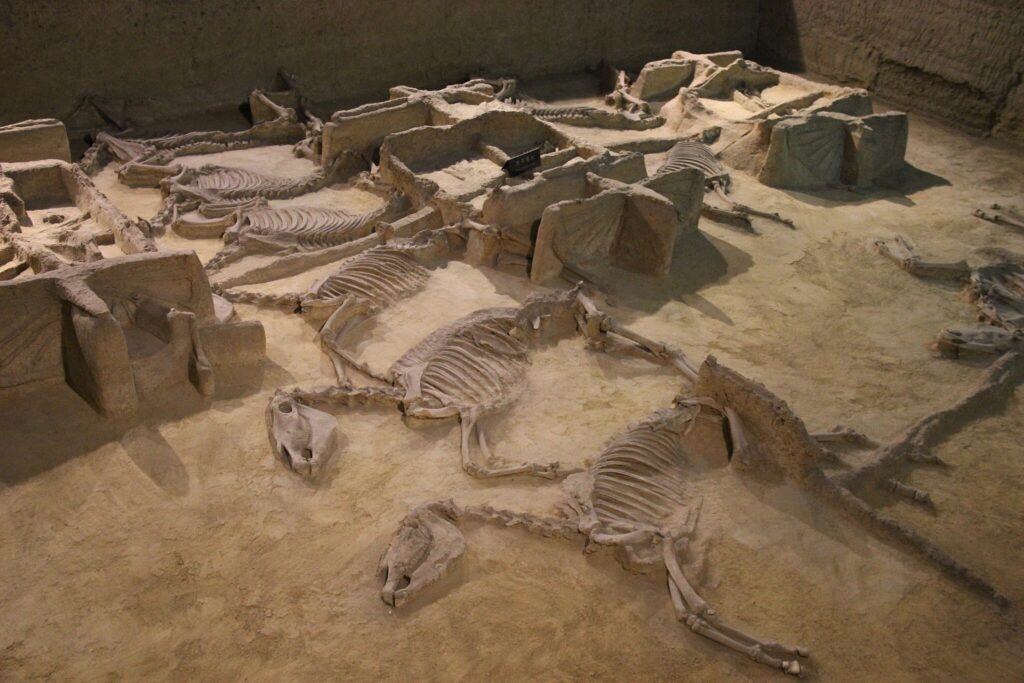
Linguistic and mythological evidence suggests that the horse-sun connection may have ancient roots in Proto-Indo-European culture, explaining its prevalence across related cultures from India to Ireland. Comparative mythology scholars have identified striking similarities in horse-sun associations among cultures descended from this common linguistic ancestor. The Sanskrit “ashva,” Greek “hippos,” Latin “equus,” and Old English “eoh” all derive from the same Proto-Indo-European root, potentially carrying shared symbolic meanings related to solar mythology. Archaeological evidence from the ancient Sintashta-Petrovka culture, associated with early Indo-European speakers, shows elaborate horse burials with solar symbols dating back to approximately 2100-1800 BCE. The spread of Indo-European cultures across Eurasia may have disseminated these symbolic associations, though the independent development of similar horse-sun connections in non-Indo-European cultures suggests deeper psychological or observational foundations. This linguistic evidence helps trace the evolution of horse-sun mythology across thousands of years and vast geographical expanses.
Modern Echoes of Ancient Solar Horse Symbolism
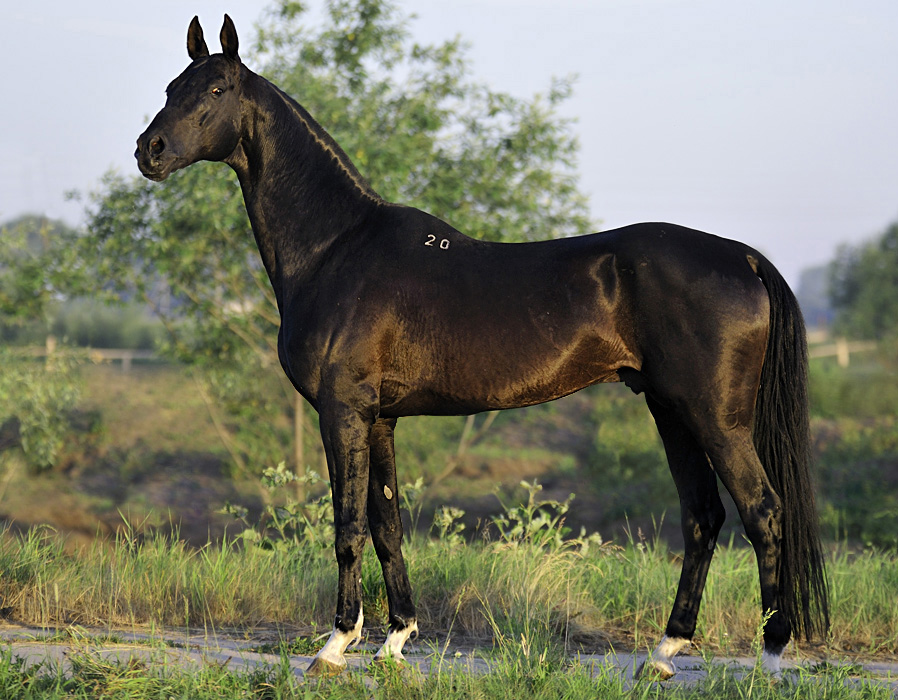
Though most ancient horse-sun mythologies have faded from active religious practice, their symbolic associations continue to influence modern culture in subtle but persistent ways. The common description of a horse having a “blazing” pace or “fiery” temperament preserves linguistic connections to solar imagery. Cinematic portrayals frequently use horses backlit by the sun to create powerful visual symbolism, drawing unconsciously on these ancient associations. Modern horse breeds with metallic coats, such as the Akhal-Teke with its golden sheen, are often described in solar terms, demonstrating the enduring power of these visual connections. Even in contemporary logo design, companies seeking to convey speed, power, and reliability frequently pair horses with solar imagery. The persistence of these associations demonstrates how deeply the horse-sun connection resonates in human psychology, transcending both cultural boundaries and the passage of time to remain relevant even in our technologically advanced society.
Conclusion
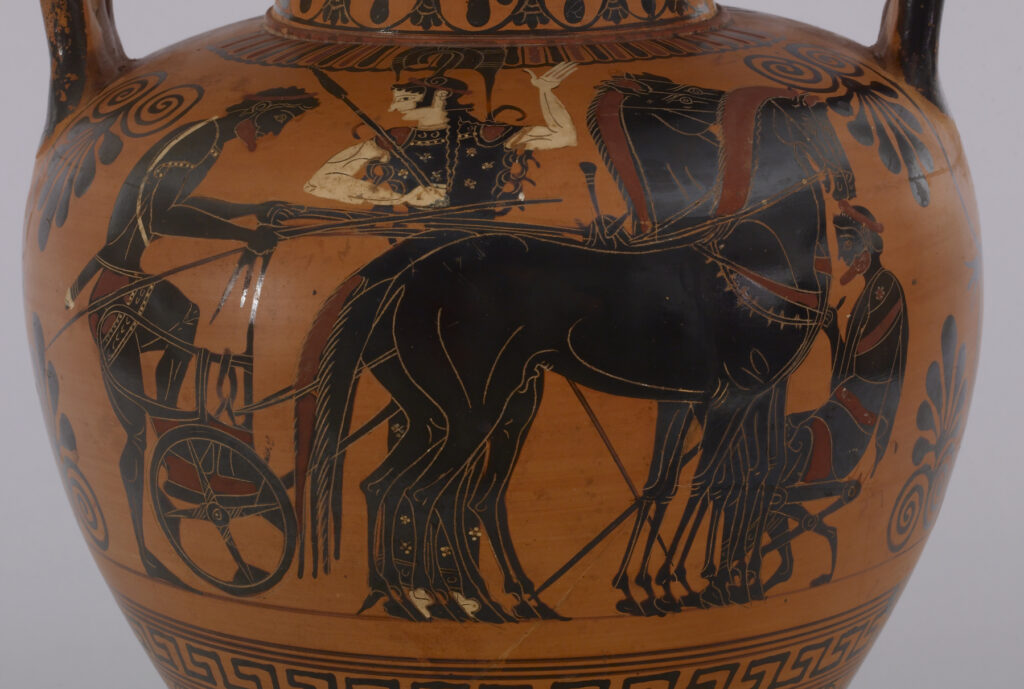
The profound symbolic partnership between horses and the sun represents one of humanity’s most enduring mythological associations, spanning continents and millennia with remarkable consistency. This connection wasn’t merely decorative but served essential explanatory functions, helping ancient peoples conceptualize the sun’s movement and power through the familiar form of the horse. From Greek solar chariots to Hindu seven-headed steeds, from Celtic solar horses to Native American equine sun dancers, these traditions reveal how independently developed mythologies often arrive at similar symbolic conclusions. The sun-horse connection illuminates not just ancient belief systems but also the human tendency to understand the cosmos through familiar earthly elements. In these majestic creatures that embodied speed, strength, and spirit, our ancestors found the perfect symbolic vehicle for the greatest power they knew—the life-giving, ever-moving sun above.







